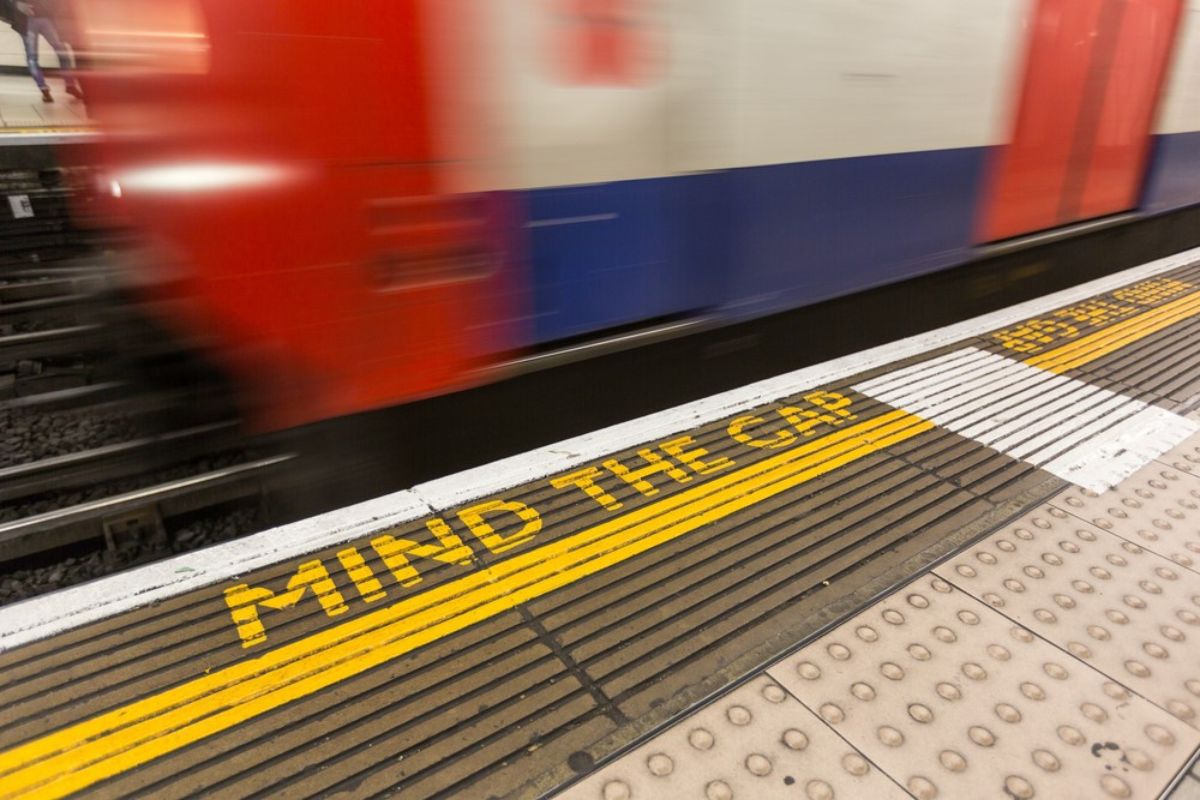Why TfL Got Into Trademark Trouble Over “MIND THE GAP”

Transport for London (TfL), the authority responsible for running the iconic London Underground, found itself in an unexpected legal tussle when it attempted to trademark the phrase “MIND THE GAP.” For most people, these three words are a familiar part of London’s daily soundtrack, echoing through tube stations and appearing in bold lettering along countless platforms. So how did something so quintessentially London lead TfL into legal hot water?
Table of Contents
ToggleThe Phrase Everyone Knows… But Who Owns It?
If you’ve ever travelled on the London Underground, chances are you’ve seen or heard the phrase “MIND THE GAP.” First introduced in 1968 as a safety message to warn passengers about the gap between the train and the platform, it has since become one of the most iconic phrases associated with London’s public transport system. It’s as recognisable as red double-decker buses, black cabs, and the tube map itself – instantly identifiable and culturally significant.
Given its widespread recognition and strong association with London’s identity, it made perfect sense for Transport for London (TfL) to seek official protection for the phrase as part of its brand. In 2021, TfL submitted a trademark application to the UK Intellectual Property Office (UKIPO), aiming to secure exclusive rights to use “MIND THE GAP” on a range of commercial products, including eyewear, bags, wallets, umbrellas, and various leather goods.
At first glance, this move seems like a natural step towards monetising a much-loved London phrase. However, trademark law is rarely as straightforward as it appears, and in this case, TfL’s ambitions were met with an unexpected opponent.
Enter GAP, the Clothing Giant
Shortly after TfL submitted its application, American clothing brand GAP Inc. filed a formal opposition. You might wonder what a US-based fashion retailer has to do with a London transport slogan. The connection may seem tenuous, but in the world of intellectual property, names and phrases matter – a great deal. GAP Inc. owns several trademarks covering clothing, accessories, and fashion-related merchandise, and it argued that the phrase “MIND THE GAP” was too similar to its own brand identity.
From GAP’s perspective, the inclusion of products like wallets and bags in TfL’s application posed a potential threat to its market. Trademark law isn’t just about the exact words used – it’s also about how those words are perceived in commercial contexts. GAP argued that consumers might mistakenly believe there was a connection between its brand and TfL’s products featuring the phrase “MIND THE GAP.” In trademark terms, this raised the issue of “likelihood of confusion.”
But GAP didn’t stop there.
The Real Problem? A Past Deal
As it turns out, this wasn’t the first time the two organisations had clashed over branding. Back in 2004, GAP and TfL entered into a confidential settlement agreement after a previous dispute regarding the use of the phrase. As part of that agreement, TfL allegedly agreed not to register “MIND THE GAP” for certain categories of goods – specifically, clothing and related accessories.
Fast forward to 2021, and GAP claimed that TfL’s new trademark application breached the terms of that earlier deal. According to GAP, TfL was aware of the agreement but deliberately filed the application anyway. This claim introduced a much more serious allegation: bad faith.
In legal terms, “bad faith” doesn’t necessarily imply malice or dishonesty. Instead, it refers to an applicant acting unfairly or without regard for existing agreements or the legitimate interests of others. The UKIPO agreed with GAP’s assessment. Since TfL’s application covered categories similar to those outlined in the 2004 agreement – like wallets and cardholders – the Office found that the application was indeed made in bad faith.
UKIPO’s Ruling: A Partial Defeat for TfL
Ultimately, the UKIPO issued a nuanced ruling. It acknowledged that there was minimal risk of consumer confusion between “MIND THE GAP” and “GAP” due to their different contexts – one being a transport-related phrase, the other a fashion brand. However, the bad faith allegation carried significant weight.
The UKIPO ruled that TfL had acted improperly by attempting to register the mark in categories covered by the 2004 settlement. As a result, TfL’s application was rejected for specific goods – namely, clothing accessories and leather items – where GAP’s trademarks already held sway or where the agreement explicitly applied. The remainder of the application, for categories not affected by the prior agreement, was allowed to proceed.
So, while TfL didn’t lose entirely, the decision on “MIND THE GAP” acted as a reminder about the importance of adhering to past agreements in trademark law.
Why Did TfL Get Into Trouble?
There are three main takeaways:
- They Underestimated an Old Agreement: Even though nearly two decades had passed since the original deal of “MIND THE GAP”, TfL failed to consider its lasting legal impact. Trademark disputes don’t happen in isolation – past settlements can and do resurface.
- They Went Up Against a Global Brand: GAP is no small player. It’s a multinational corporation with a long track record of defending its intellectual property. Any overlap with its core categories – especially clothing and accessories – was always going to attract scrutiny.
- They Aimed Too Broad: TfL’s “MIND THE GAP” application wasn’t limited to niche promotional items. By applying the trademark to a wide range of lifestyle products, it risked encroaching on commercial territory already claimed by other brands.
Lessons for Other Brands
What TfL’s experience illustrates is that trademark law is about more than simply being first or famous. It’s about context, history, and, above all, awareness. Even public organisations with iconic phrases can find themselves entangled in legal challenges if they disregard previous agreements or fail to consider the broader trademark landscape.
When applying for a trademark – particularly across multiple product categories – brands must do more than just check for identical phrases. They need to assess the potential for market confusion, take into account historical agreements, and consider brand dilution. Acting in “bad faith,” even unintentionally, can derail an otherwise legitimate claim.
Need Help Navigating Trademark Trouble?
Trademark law is tricky for all businesses, and your best course of action is always to consult copyright lawyers with expertise in the field. Whether you’re launching a new brand or protecting an old one, copyright lawyers in London can help you avoid the pitfalls that TfL encountered.
Final Thoughts
TfL’s stumble over “MIND THE GAP” highlights how complex trademark law can be. A phrase known the world over and intrinsically tied to London itself still couldn’t be fully protected, due to a combination of legal oversight and brand overlap. This serves as a cautionary tale: in the world of trademarks, history matters, and no brand – no matter how beloved – is immune from the fine print.
Published by Carol Jones
My aim is to offer unique, useful, high-quality articles that our readers will love. Whether it is the latest trends, fashion, lifestyle, beauty , technology I offer it all View more posts
Recent Post
Golf Resorts In Greece – Something’s Changing

Rediscover Luxury and Nature at Hotel Xcaret Mexico






